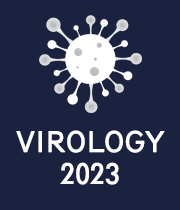Virology 2023 Important Update
This is to inform that Virology 2023 event is now merged with Infection 2023 which will be held on same dates June 21-22, 2023 in Rome, Italy and virtually.
For complete details about the merged event, please visit: https://infectiouscongress.com
For further details, please contact us at infectious@magnusconference.com or call + 1 (702) 988 2320
Viral Diversification in Host/Host Populations
Evolution is fuelled by genetic diversity, which makes it easier to adapt to new settings. Viruses are among the most rapidly developing organisms on the planet. Viruses, particularly RNA viruses, gain genetic variety quickly due to short generation durations, enormous population sizes, and high mutation rates. This genetic diversity is essential for viruses to adapt to new challenges like the immune system and medicines. A virus's evolutionary dynamics can differ between hosts and populations. Within-host evolution research bridges the gap between laboratory investigations of virus evolution and large-scale phylodynamic analysis. They can figure out how well global processes are replicated on smaller sizes and how well experimental diseases mimic natural infections.
- Host Genetic Diversity
- Host Immunity
- Host-Virus Interactions

